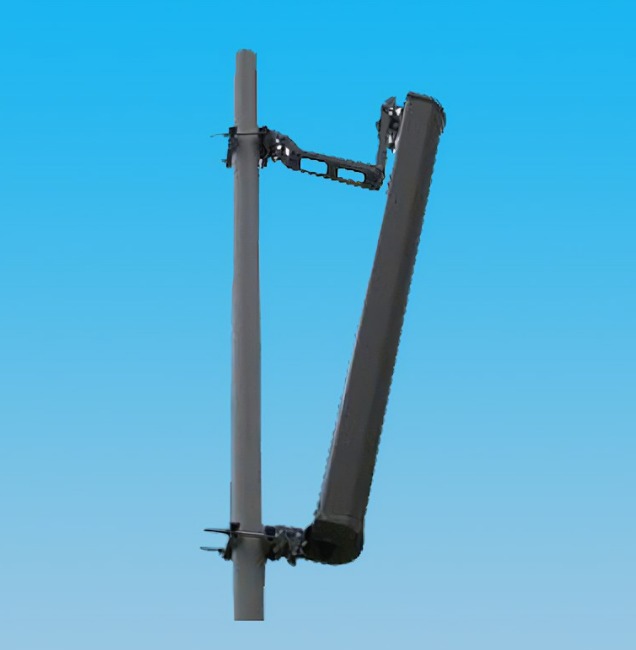Exploring the GSM Antenna Frequency Range: A Crucial Component of Mobile Communication

I. Introduction
In the ever-evolving landscape of mobile communication, the GSM (Global System for Mobile Communications) antenna plays a pivotal role. This essential device is responsible for both receiving and transmitting radio signals within a specific frequency range. The GSM frequency range is not a fixed parameter but varies according to geographical regions and network operators. Typically, it encompasses the 900 MHz and 1800 MHz bands in Europe, Asia, and Africa, as well as the 850 MHz and 1900 MHz bands in North and South America. In this comprehensive guide, we will delve into the intricacies of GSM antennas, their frequency ranges, and their diverse applications.
II. Understanding GSM Antennas
A GSM antenna is an indispensable component of the mobile communication infrastructure. It serves as the bridge between mobile devices and cell towers, facilitating the exchange of voice and data. These antennas come in two primary types: omnidirectional and directional. The choice between them hinges on specific coverage and performance requirements.
III. Omnidirectional GSM Antennas
Omnidirectional GSM antennas are designed to radiate radio signals uniformly in all directions, resembling a donut-shaped radiation pattern. They are commonly employed in urban areas where cell towers are densely spaced, and the objective is to provide seamless coverage to a broad spectrum of users. Omnidirectional antennas are often used for outdoor applications like cellular base stations and rooftop installations.
These antennas are typically used in densely populated regions where the goal is to provide coverage to a wide area efficiently. Omnidirectional antennas are often found atop cell towers and buildings in urban areas, ensuring that signals are distributed evenly in all directions.
IV. Directional GSM Antennas
Conversely, directional GSM antennas are tailored to concentrate their signal radiation in a specific direction. Unlike omnidirectional antennas, they have a focused radiation pattern that can extend over long distances. This makes them ideal for scenarios where coverage needs to be directed toward a particular area or point.
Directional antennas are commonly used in rural areas or places with challenging terrain where signal propagation can be obstructed. By focusing the signal in a specific direction, they can overcome obstacles and deliver reliable connectivity over extended distances. This is particularly valuable for remote communication installations and point-to-point links.
V. GSM Frequency Bands
One of the critical aspects of GSM antennas is their compatibility with the frequency bands used by the GSM network. The GSM frequency range can vary across different parts of the world and is typically categorized into two main bands:
-
900 MHz and 1800 MHz Bands (Europe, Asia, and Africa):
- In Europe, Asia, and Africa, the GSM network primarily operates within the 900 MHz and 1800 MHz frequency bands.
- The 900 MHz band is used for GSM 900, while the 1800 MHz band is used for GSM 1800, also known as DCS 1800.
-
850 MHz and 1900 MHz Bands (North and South America):
- North and South America, on the other hand, predominantly utilize the 850 MHz and 1900 MHz bands for GSM communication.
- The 850 MHz band is allocated for GSM 850, and the 1900 MHz band is allocated for PCS 1900.
These frequency bands were allocated to GSM to avoid interference with other wireless services and to facilitate seamless international roaming. As a result, GSM antennas must be tuned to operate within these specific frequency ranges to ensure effective communication.
VI. Applications of GSM Antennas
The versatility of GSM antennas extends beyond just mobile phones. These antennas find applications in various sectors, including:
-
Telecommunications: GSM antennas are a cornerstone of mobile network infrastructure. They are deployed on cell towers, rooftops, and even indoor locations to provide cellular connectivity to a vast user base.
-
Transportation: GSM antennas are used in vehicles to enable GPS tracking, fleet management, and passenger connectivity. Public transportation systems, such as buses and trains, rely on these antennas for real-time communication and navigation.
-
Industrial and IoT: In industrial settings, GSM antennas are employed for machine-to-machine (M2M) communication and Internet of Things (IoT) applications. They facilitate remote monitoring, control, and data transmission.
-
Agriculture: Farmers use GSM antennas for precision agriculture. These antennas help in gathering data from sensors, drones, and other equipment, enabling efficient crop management.
-
Emergency Services: GSM antennas are crucial for emergency services and first responders. They ensure reliable communication in critical situations, aiding in disaster response and public safety.
VII. Conclusion
In conclusion, GSM antennas are the unsung heroes of the mobile communication world, enabling seamless connectivity across the globe. Their ability to operate within specific frequency ranges, including the 900 MHz, 1800 MHz, 850 MHz, and 1900 MHz bands, ensures that users can stay connected wherever they are. Whether in the form of omnidirectional antennas for urban coverage or directional antennas for remote locations, these devices play a vital role in modern communication infrastructure. Their applications span across industries, contributing to the advancement of telecommunications, transportation, agriculture, and emergency services. As technology continues to evolve, GSM antennas will remain a fundamental component of our interconnected world.

 Mobile Signal Booster
Mobile Signal Booster